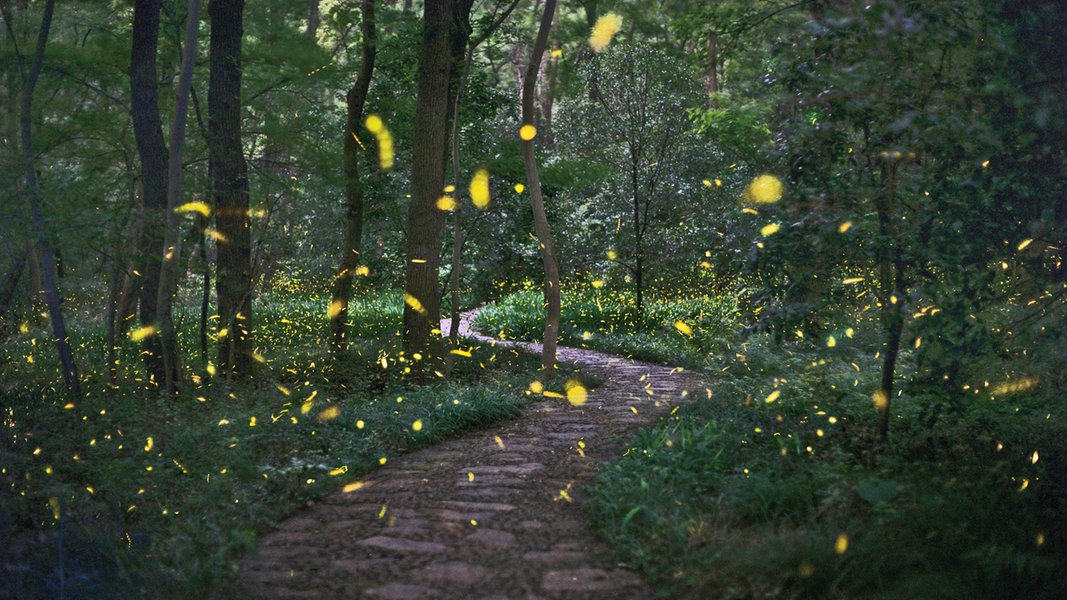Status: 06/26/2023 1:35 p.m
On warm summer evenings, the little beetles enchant gardens and forest edges with their glow. Where exactly can you observe them, how can you settle them and how do fireflies produce light?
Every year, usually from the middle or end of June, the little animals swarm out and go looking for a partner. You can observe their magical glow until around the beginning of August.
Fireflies: when to watch them
Fireflies can be seen from dusk until around midnight on the edges of forests, on meadows and bushes, often near ponds or riverbanks. With a bit of luck, they show up especially on warm evenings with as little wind as possible. Fireflies avoid brightness, as do streets and busy areas.
Where in the north can you see fireflies?
In Lower Saxony, glowworms can be observed in many places, for example at the Wiesenbeker pond in the Harz Mountains near Bad Lauterberg, at Höhbeck in Wendland or in the Eilenriede in Hanover. In Mecklenburg-Western Pomerania, too, they are regularly spotted near bodies of water, for example in the Müritz National Park or in the Lanken nature reserve on the Greifswalder Bodden. In Hamburg, glowworms can be found in some dark places like Wittmoor and Schnaakenmoor, but there are hardly any sightings in Schleswig-Holstein.
Three species native to Germany
This large female firefly tries to attract a male with her glow.
Fireflies are not worms, they are beetles. However, the females, which have no wings and therefore cannot fly, look a bit like small worms. There are more than 2,000 species worldwide, three species are native to Germany: the small firefly, the large firefly and the short-winged firefly. In all three species, the female can glow, but only in the small firefly the male also glows. A flying firefly is therefore always a specimen of the small firefly in our latitudes.
Why do fireflies glow?
With the glow, the fireflies try to attract a partner. To do this, the female sits on an elevated place, such as a long blade of grass. The flying males are attracted by the glow and fall on the female. The glow is caused by a biochemical reaction in cells on the abdomen of the animals, during which light energy is released. During the mating itself, the animals no longer glow. The female then lays the eggs under dead wood, branches, in the root area of grass or stones and dies shortly thereafter. The males also die shortly after mating.
Larvae feed on snails
Fireflies spend most of their lives – a total of three years – in the larval stage. They feed mainly on snails – this makes the rare animals useful in the garden. When they have eaten enough, the larvae pupate. After a week, the fireflies hatch and go in search of a partner.
Attract fireflies in the garden
If you want to experience the spectacle of the fireflies in your own garden, you can try to make it more inviting for the animals. You should let the grass grow longer between June and August or avoid mowing altogether. Try not to tidy up the garden too neatly. Small clusters of branches and twigs are good hiding places for the larvae. Do not use snail poison, as snails are the larvae’s most important food. Important: Reduce artificial lighting to a minimum, because brightness deters fireflies. Artificial light sources confuse the male in search of a female.
Light pollution and pesticides are two important reasons why fireflies are now considered endangered in Germany. Development and intensive agriculture are also causing their natural habitats to shrink.
Further information
Bee-friendly and diverse: A natural garden can be designed with simple means. Tips for suitable plants. more
This topic in the program:
Hello Lower Saxony | 07/22/2021 | 19:30 o’clock
